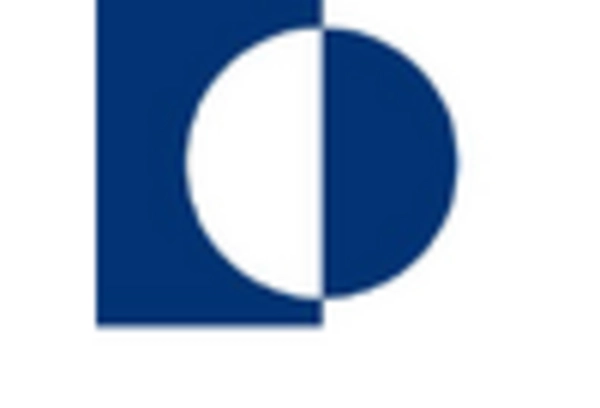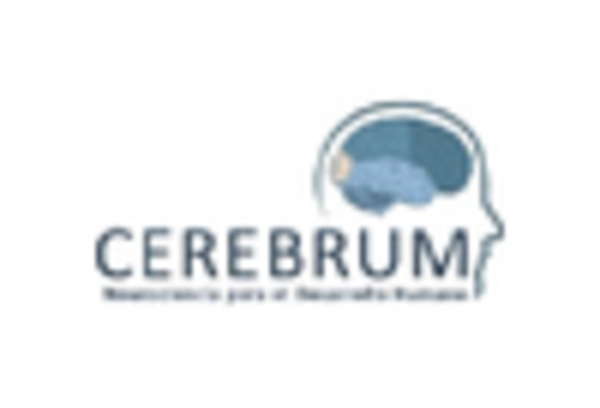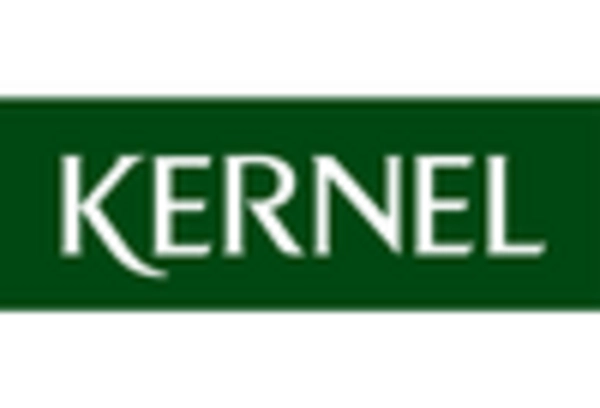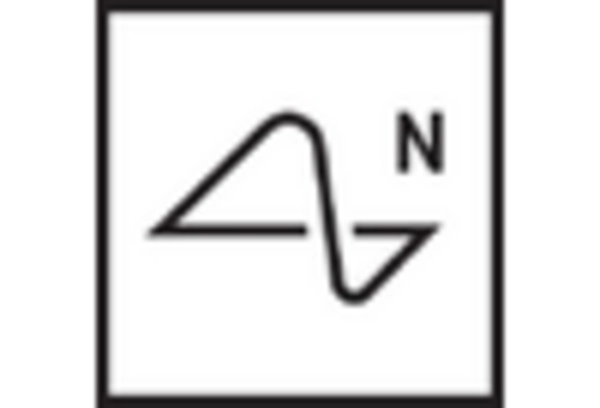Growing Awareness of Mental Health Issues
The increasing awareness of mental health issues is influencing the Neurotechnology Brain-Computer Interface Market. As society becomes more attuned to the importance of mental well-being, there is a corresponding interest in technologies that can aid in mental health management. Brain-computer interfaces are being explored for their potential to assist in the treatment of conditions such as depression, anxiety, and PTSD. This trend is prompting healthcare providers to consider neurotechnology solutions as viable options for therapeutic interventions. The rising demand for mental health support is likely to drive innovation within the Neurotechnology Brain-Computer Interface Market, leading to the development of targeted applications that address specific mental health challenges.
Technological Advancements in Neurotechnology
Technological advancements play a crucial role in shaping the Neurotechnology Brain-Computer Interface Market. Innovations in neuroimaging, signal processing, and machine learning are enhancing the capabilities of brain-computer interfaces. These advancements enable more accurate interpretation of neural signals, leading to improved user experience and functionality. For instance, the integration of artificial intelligence algorithms allows for real-time adaptation of interfaces based on user intent. As these technologies evolve, they are expected to attract significant investment, further propelling the growth of the Neurotechnology Brain-Computer Interface Market. The continuous evolution of hardware and software solutions is likely to create new opportunities for applications in both medical and non-medical fields.
Rising Demand for Neurorehabilitation Solutions
The Neurotechnology Brain-Computer Interface Market is experiencing a notable increase in demand for neurorehabilitation solutions. This surge is primarily driven by the growing prevalence of neurological disorders, such as stroke and traumatic brain injuries. According to recent data, the number of individuals requiring rehabilitation services is projected to rise significantly, leading to an increased focus on innovative technologies that facilitate recovery. Neurotechnology solutions, particularly brain-computer interfaces, offer promising avenues for enhancing motor function and cognitive abilities in affected individuals. As healthcare providers seek effective rehabilitation methods, the Neurotechnology Brain-Computer Interface Market is likely to expand, with investments directed towards research and development of advanced neurorehabilitation tools.
Increasing Investment in Neurotechnology Research
Investment in neurotechnology research is a driving force behind the growth of the Neurotechnology Brain-Computer Interface Market. Governments and private entities are recognizing the potential of neurotechnology to address various health challenges. Funding for research initiatives aimed at developing advanced brain-computer interfaces is on the rise, with several countries allocating substantial budgets to support innovation in this field. This influx of capital is expected to accelerate the development of new applications, ranging from assistive technologies for individuals with disabilities to enhancements in cognitive performance. As research progresses, the Neurotechnology Brain-Computer Interface Market is likely to witness a proliferation of novel solutions that cater to diverse user needs.
Expansion of Consumer Electronics Incorporating Neurotechnology
The expansion of consumer electronics incorporating neurotechnology is reshaping the Neurotechnology Brain-Computer Interface Market. As technology becomes more integrated into daily life, there is a growing interest in devices that leverage brain-computer interfaces for enhanced user experiences. Products such as neurofeedback devices and gaming interfaces are gaining traction among consumers, indicating a shift towards more personalized and interactive technology. This trend is likely to encourage manufacturers to invest in the development of user-friendly neurotechnology solutions that appeal to a broader audience. The convergence of neurotechnology with consumer electronics is expected to create new market opportunities and drive growth within the Neurotechnology Brain-Computer Interface Market.


















Leave a Comment